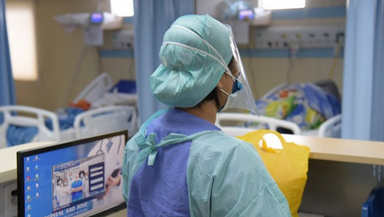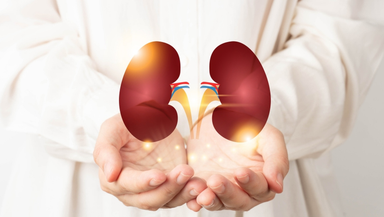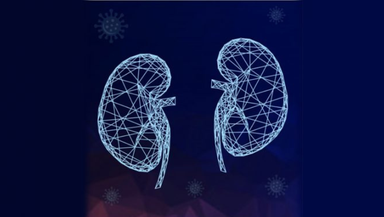Liver Diseases and Liver Transplantation
The Liver, which is situated just below the Diaphragm and occupies most of the right-upper quadrant of the Abdomen, is the largest solid Organ inside the body.
The Liver is divided into two main lobes, each containing 4 segments, which in turn consist of 1,000 small lobes known as Lobules. The lobules are linked to tiny ducts that merge to form larger ducts, ultimately forming the common Hepatic Duct. This duct carries Bile produced by the Liver cells to the Gallbladder and Duodenum (the initial segment of the Small Intestine) through the Common Bile Duct. The gall bladder stores the bile and when food comes in small intestine, it contracts and releases the bile into intestine to help in digestion and absorption of food.
The Liver plays a critical role in circulating the absorbed substances by the Digestive Tract through the Portal Venous Circulation. Additionally, the Liver is closely associated with the Biliary System, which comprises the Gallbladder and Bile Ducts, and is necessary for the normal digestive process.
Functions of the Liver:
The Liver is the main factory in the body, significantly responsible for the body's metabolic processes, including filtering toxins from the blood, regulating cholesterol levels, producing bile for digestion, and storing essential vitamins and minerals. It also plays a key role in regulating Blood Sugar levels, producing proteins necessary for blood clotting, and breaking down medications and other substances. It is also responsible for maintaining adequate immune system function. Without a functioning Liver, the body would not be able to perform these vital functions and sustain life.
Liver Diseases:
The complexity of the Liver and its involvement in numerous diseases means that it can be vulnerable to a host of conditions. The spectrum of liver diseases can range from acute Liver Failure, wherein a normal pre-existing liver has rapidly failed due to toxic ingestion or some drug toxicity or viral infection or so, to progressive worsening over a period of time like alcohol related or Fatty Liver related or other metabolic and auto-Immune processes. Acute-on-chronic Liver Failure is when a patient with early Liver Disease with no obvious symptoms, rapidly progresses into end stage Liver Disease with Organ failures like an acute liver failure.
Even children as young as few months of life, can present Liver Diseases like Biliary Atresia, Neonatal Hepatitis and so on. Infections like Liver abscesses or Hydatid cysts can have their own impact on this vital Organ.
Cancers like primary Liver Cancer, Bile duct cancer, Cancers which have spread from other part of the body like Colon Cancer and so on also exist. With so much at stake, understanding these
issues is essential for ongoing health management - though sadly not all cases will have happy endings if swift intervention isn't taken when needed.
Common causes of Liver Diseases:
Alcohol use is the predominant cause of Liver Diseases, upto 50% of cases in adults. Next common cause, which can soon overtake alcohol use is Fatty Liver. Fatty Liver not only causes Liver Disease, but it is also associated with metabolic syndrome, Diabetes mellitus, Hypertension, Cardiovascular Diseases. Other causes of Liver Diseases like Viral Hepatitis (Hepatitis B, Hepatitis C), metabolic diseases like Wilson’s disease, Autoimmune-related Liver Diseases, Vascular Liver Diseases like Hepatic outflow tract obstruction.
Diagnosis of Liver Diseases:
Liver Disease often goes unrecognized in its early, asymptomatic stages. Since Liver is one Organ with a large reserve, many patients manifest the symptoms only when more 80-90% of the organ is compromised. Only periodic health check-ups, especially those with risk factors like family of Diabetes, alcohol use disorder, presence of Hepatitis B and so on.
Typical symptoms of end-stage Liver Disease include
Dull pain in the right upper Abdomen;
Jaundice (a yellowing of Skin and Eyes);
dark colored urine;
swelling in Legs and belly
Increased risk of bleeding
Easy forgetfulness
Loss of muscle mass, skin darkening
any other evidence suggestive of Liver dysfunction.
Your physician will take a detailed health history before ordering standard lab tests including Liver Function Test (LFT), INR scores etc., while additional specific screenings such as Hepatitis Viral Serology may be recommended depending on your case profile. Imaging studies like ultrasounds can identify basic structural issues while CT scans and MRIs are employed to capture more precise imaging details with 3D view if indicated by that initial clinical evaluation process.
Liver Transplant
Liver Transplantation is a medical procedure in which a diseased or damaged Liver is replaced with a healthy Liver from a donor. The procedure is typically recommended for individuals with end-stage Liver Disease, which is a condition in which the Liver can no longer function properly, leading to life-threatening complications.
When does an individual need a Liver Transplant?
1. Progressive end-stage Liver Cirrhosis with MELD score greater than 15
2. Complications of Liver Cirrhosis such as Hepatic Encephalopathy (altered behavior, forgetfulness, coma), spontaneous bacterial peritonitis (spontaneous infection of water in Abdomen), Hepatocellular Carcinoma (Liver Cancer), hepatopulmonary syndrome (progressive breathing difficulty because of Liver Disease)
3. Acute Liver Failure: A clinical syndrome entity wherein a patient with no pre-existing Liver Disease, develops Jaundice followed by Encephalopathy (Liver coma) within 4 weeks
4. Liver Diseases in children such as Extra-hepatic Biliary Atresia, Metabolic Liver Disease, Hepatoblastoma
5. Hereditary diseases such as Wilsons Disease, Hereditary hemochromatosis, Hereditary hyperoxaluria.
Patients who are considered for a Liver Transplant must undergo a thorough evaluation to determine their candidacy for the procedure. The evaluation takes into account various factors such as the severity of Liver Disease, overall health, and the presence of other medical conditions. Ultimately, the decision to undergo a Liver Transplant is made on a case-by-case basis in consultation with the patient's medical team.
Liver Transplant is a complex but transformative procedure, requiring the expert hand of experienced Surgeons. The process begins with dissection which allows for the isolation and transection of various structures; namely, Inferior Vena Cava, Portal Vein, Hepatic Artery, and Bile Duct - before removal of diseased liver can take place. After successful implantation has occurred with healthy liver graft from a donor, these vessels must be restored in order to allow blood flow throughout.
Know more about the types of Liver Transplant
• Split Donor Transplant
Split Donor Transplantation, or Partial Deceased Donor Liver Transplantation as it is also known, offers a promising solution for increasing the number of available organs and reducing wait times for patients needing Transplants. In this procedure, the deceased donor's organ is divided into two parts - typically with the larger right Lobe being used in adults and smaller left portion reserved primarily for children. To ensure satisfactory outcomes from Split Livers however, careful selection of recipients and the adequacy of the cadaver liver studied beforehand.
• Cadaveric Transplant/ Deceased Donor Transplant
Transplantation of organs or tissues from a deceased donor is referred to as Cadaveric Transplant. In such cases, Brain death due to road traffic accident or some other intracranial bleed serves as criteria for selection. When an individual encounters a tragic event that leaves the body with significant damage, organ donations are often made in order to benefit others. Transplant operations take into account numerous factors; including quality and functionality of
available organs along with potential recipient's age and medical history (prior approval being granted by governing bodies).
• Whole Liver Transplant
When the Liver no longer functions due to diseases like Cirrhosis, Hepatitis, or Cancer necessitates a Transplantation of a healthy donor organ. Thus commences an operation wherein the failing Liver is replaced with one from a compatible match in terms of blood type and size - providing hope for those whose only chance at survival lies in such initiatives.
• Paediatric Liver Transplant
Liver transplantation in children is a complex yet potentially life-saving procedure. In it, the recipient's failing Liver is replaced with one from either a living or deceased donor. This process requires careful connection of Blood Vessels and Bile Ducts between both parties. Such endeavour becomes necessary for conditions such as Biliary Atresia, metabolic diseases, tumours and other cases when medical treatment fails to yield an adequate result. Thus, Paediatric Transplants provide hope for those suffering from end-stage Liver failure or disease who have no alternative options available to them.
• Adult Liver Transplant
Liver Transplantation offers a viable treatment solution for adults with irreversible Liver damage, such as Cirrhosis and Hepatitis. A successful Adult Liver Transplant requires the expertise of multiple specialists who carefully assess both donor eligibility and patient health to ensure optimum success rates post-operatively. The intricate surgery itself involves attaching Blood Vessels and Bile Ducts from both recipient and donor in order to provide the body with an organ necessary for continued function.
Why Liver Transplant – Benefits
• Improved life expectancy
• Improved quality of life
• Reduced risk of Cancer
• Improved mental health
Specialities
Clear allMeet the doctor

Dr Aditya Nanavati
HPB Surgery
MBBS, MS, Fellowship in Abdominal Transplant Surgery (Duke University, USA)











